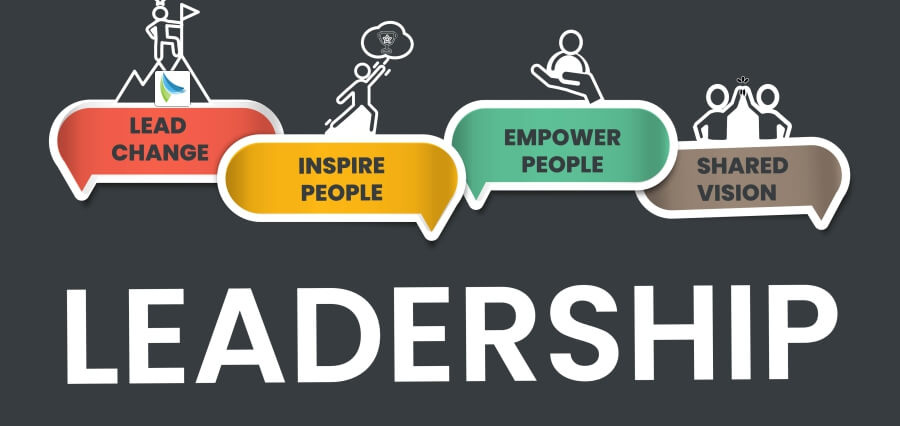Leading the Shift
Leadership is changing significantly as a result of the upheaval of the world to some extent by rapid technological innovation, economic instability, and social expectations that are changing. It is not just the next thing that the leaders do to manage the operations of their units or to bring the plans to effect. They are taking their companies through a phase of constant change. Introducing change in this particular context is not getting the change done but being the change yourself; it is not having control over change but encouraging adaptability. Leaders nowadays gain their strength not from their authority, but from their capacity to link people, purpose, and progress in a world that gets more and more complicated.
The Changing Context of Leadership
The world has never been so interconnected and less predictable. Along with these things to deal with, such as digital disruption, climate change, and changing workforce trends, leaders are expected to handle even more ambiguous situations but with more confidence and vision. The hierarchical structures of the past, which were effective at times of stability, are now challenged to change with velocity and complexity of matters.
Consequently, current leadership entails flexibility, which is the capability to make a strategic turn still being able to keep the general long-term objectives in mind. It invites as well emotional intelligence, empathy, and the skill of giving a very clear feeling of the mission through the communication. In short, leadership has changed from commanding to connecting, from managing to inspiring.
The Power of Purpose
Transformational leadership at its core is all about purpose. Among the uncertainties, it is the main source of clarity. Purpose brings people together under one common vision and is, in fact, the “why” behind the “what” which it greatly supports. Leaders today get that []. Employees and stakeholders, instead of demanding financial success, are actually looking for meaning, belonging, and impact.
Leadership based on purpose is the key that unlocks the organization’s potential for acting with moral integrity and a sense of direction. The purpose serves as a guide to decision-making, a source of motivation, and a tool for building the capacity to bounce back when challenges arise, only if it is fully and deeply ingrained in the strategy. The same leaders who frequently reinforce and live purpose also find it easier to create trust and engagement even when things are in turmoil.
Inspiring Transformation Through Vision and Empathy
Transformation cannot be imposed from above, rather it comes about as a result of shared vision and empathy. The future that they see is the most vivid and brightly lit by the leaders, but they also understand more than anyone else the things about people and that side of change. They get people involved, they empower people, and they make efforts to ensure that individuals choose to have their own personal participation in the transformation process.
Empathy is what connects the leadership functionalities and the experiences of employees. By embracing and accepting even the most difficult aspects of change, such as uncertainty, resistance, and fear, leaders provide psychological safety, which then opens the way for teams to innovate and to carry out experiments without being afraid of failing. In this way, they ensure that such transformational activities can be lasting and not shallow.
Agility: A Core Leadership Competency
Agility is a must-have attribute, rather than an optional one, in a complex world. The environment of modern leaders is characterized by constant change. It means they have to be ready for upheaval, modify their tactics in a flash and steer the companies that are quick to the ever-changing demands of the market.
Agile leadership to some extent is a combination of decisiveness and flexibility. It mainly focuses on progression rather than perfection and prefers continuous learning as opposed to static expertise. The practice of agility among leaders results in the adoption of experimentation by employees, learning from mistakes is rewarded, and teams are given the freedom to quickly make changes. This flexibility not only speeds up the process of innovation but also increases the organization’s ability to withstand uncertainty.
Building Cultures of Transformation
The culture of leadership change through the experience of the cultural transformation which is the starting point. The organizations that manage to thrive in the face of complexity are those which have developed the cultural characteristics of openness, collaboration, and accountability. The modern leaders through their behavior play an essential role in the establishment of such cultures as they exemplify transparency, trust, and inclusiveness.
Conclusion
Such leadership that can handle the shift in a complex world is therefore one which embraces transformation as something continuous rather than a destination. Modern leaders are the ones who create the momentum for change by matching purpose with action, mixing agility with empathy, and keeping the harmony between innovation and integrity.
They see leadership of today not as being in control of outcomes but rather as the enabling of others in accomplishing them. It is about leading organizations through complexity with clarity, courage, and connection.











